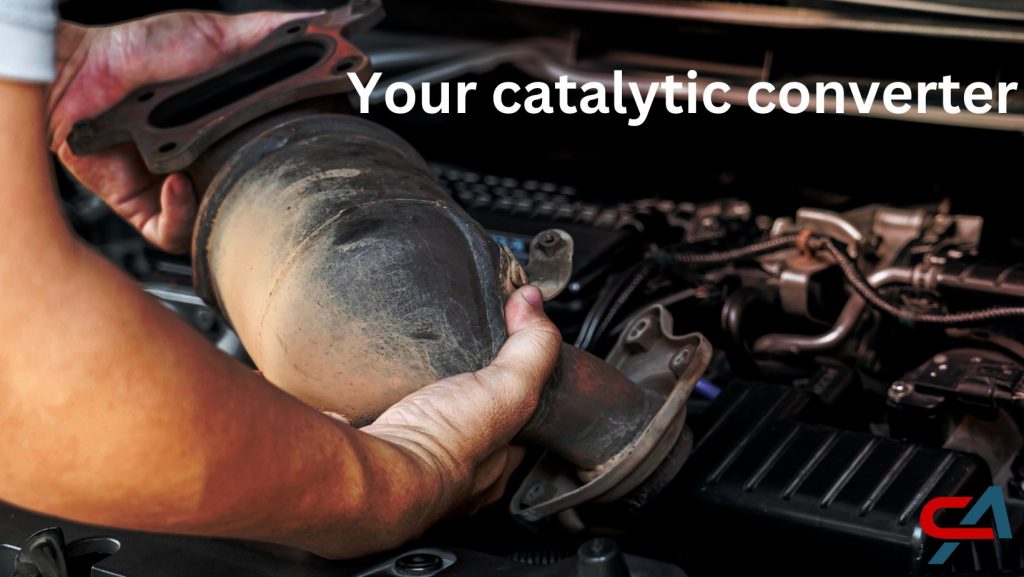A Catalyst For Clean air: The Catalytic Converter
A catalytic converter is a critical component in a vehicle’s exhaust system, designed to reduce harmful emissions generated during the combustion process. Its primary function is to convert harmful pollutants, such as nitrogen oxides (NOx), carbon monoxide (CO), and unburned hydrocarbons, into less toxic substances like nitrogen, carbon dioxide, and water vapor.
Here’s a more detailed explanation of how a catalytic converter works:
Basic Structure:
The catalytic converter is typically a metal canister that looks like a muffler and is located in the exhaust system.
Inside the canister is a honeycomb-like structure made of a ceramic or metallic substrate coated with a catalyst
Catalyst Composition:
The catalyst usually combines precious metals such as platinum, palladium, and rhodium.
These metals facilitate chemical reactions that convert harmful pollutants into less toxic substances.
Catalytic Reactions:
Three main reactions occur within the catalytic converter:
- Reduction of nitrogen oxides to nitrogen and oxygen: 2NOx → xO2 + N2
- Oxidation of carbon monoxide to carbon dioxide: 2CO + O2 → 2CO2
- Oxidation of unburnt hydrocarbons (HC) to carbon dioxide and water: CxH2x+2 + [(3x+1)/2]O2 → xCO2 + (x+1)H2O.
Converter Operation:
The catalytic converter operates at high temperatures, usually between 400 to 800 degrees Celsius (750 to 1,500 degrees Fahrenheit).
The exhaust gases pass over the catalyst, where chemical reactions occur, transforming harmful compounds into less harmful ones.
Servicing a Catalytic Converter:
Catalytic converters are generally durable and do not require regular maintenance or servicing. If a catalytic converter fails, it’s often due to contamination or physical damage.
Common issues include catalyst poisoning (contamination by substances like lead or silicone), overheating, or damage caused by impacts or road debris.
Replacement:
Replacement is the most common solution in case of a malfunctioning catalytic converter. It’s essential to identify and address the root cause of the failure to prevent damage to the new catalytic converter.
Stolen Catalytic Converter:
Many vehicles become a target for thieves, precious metals contained in the catalytic converter make it a prime candidate for the underworld. If your converter is stolen you’ll know for sure. The thieves cut the exhaust pipe to remove the converter, usually damaging one or more of the oxygen sensors. Your engine light will be on and your vehicle will sound like a tractor. Most insurance companies will assist in the replacement of the converter; like any other claim. We will be happy to assist.
Replacement catalytic converters need to meet specific emission standards to comply with environmental laws.
Give us a call and speak with one of our automotive professionals if you suspect issues with your catalytic converter, as we can perform diagnostics and recommend the appropriate course of action.

